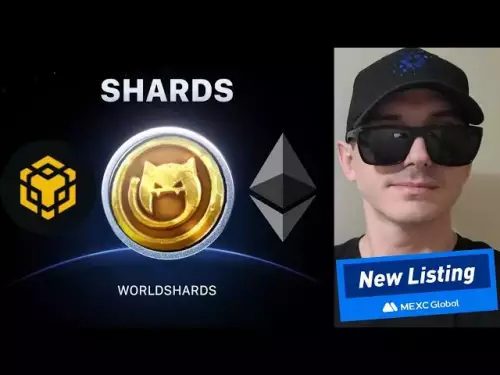-
 Bitcoin
Bitcoin $110000
-1.96% -
 Ethereum
Ethereum $4290
-4.05% -
 Tether USDt
Tether USDt $1.000
0.01% -
 XRP
XRP $2.806
-1.93% -
 BNB
BNB $844.4
-1.88% -
 Solana
Solana $203.5
-3.22% -
 USDC
USDC $0.9999
0.01% -
 Dogecoin
Dogecoin $0.2119
-3.44% -
 TRON
TRON $0.3347
-1.84% -
 Cardano
Cardano $0.8071
-3.99% -
 Chainlink
Chainlink $22.39
-5.73% -
 Hyperliquid
Hyperliquid $45.07
-2.08% -
 Ethena USDe
Ethena USDe $1.001
0.01% -
 Bitcoin Cash
Bitcoin Cash $585.2
-1.91% -
 Sui
Sui $3.250
-3.97% -
 Stellar
Stellar $0.3530
-3.10% -
 Avalanche
Avalanche $24.40
-3.60% -
 Hedera
Hedera $0.2118
-4.15% -
 Cronos
Cronos $0.2643
-4.99% -
 UNUS SED LEO
UNUS SED LEO $9.514
0.10% -
 Litecoin
Litecoin $109.9
-2.51% -
 Toncoin
Toncoin $3.095
-2.26% -
 Shiba Inu
Shiba Inu $0.00001206
-3.89% -
 Polkadot
Polkadot $3.751
-3.35% -
 Uniswap
Uniswap $9.214
-5.03% -
 Dai
Dai $0.9999
-0.01% -
 Monero
Monero $268.5
-0.59% -
 Aave
Aave $308.8
-5.24% -
 Bitget Token
Bitget Token $4.810
-3.43% -
 World Liberty Financial
World Liberty Financial $0.1765
-19.97%
How to find the block height of a transaction
Block height indicates a transaction's position in the blockchain, showing when it was confirmed and how many blocks have since been added, ensuring its security and finality.
Sep 04, 2025 at 08:37 pm

Understanding Block Height in Blockchain Transactions
1. Block height refers to the number of blocks that have been confirmed on the blockchain since its inception. Each new block added to the chain increases the block height by one, starting from block zero, also known as the genesis block. When analyzing a transaction, identifying its block height provides insight into when it was confirmed and how many subsequent blocks have been added after it.
2. Transactions on a blockchain are grouped into blocks, and each block is cryptographically linked to the previous one. This creates a linear and chronological chain of blocks. The position of a transaction within this chain is defined by the block in which it was included, and that block’s position is measured by its height.
3. Knowing the block height of a transaction helps verify its confirmation status. The higher the block height difference between the transaction block and the latest block, the more confirmations the transaction has, making it more secure against potential reorganization or double-spending attacks.
Using Blockchain Explorers to Locate Block Height
1. The most accessible method to find the block height of a transaction is by using a blockchain explorer. Platforms like Blockchain.com, Etherscan for Ethereum, or Blockchair for multiple blockchains allow users to search for transactions using their transaction ID (TXID). Once the transaction is located, the explorer typically displays the block height directly in the transaction details.
2. After entering the TXID into the search bar of a blockchain explorer, the resulting page will show key information such as the transaction amount, sender and receiver addresses, fees, and crucially, the block number. This block number is the block height at which the transaction was confirmed.
3. Some explorers also provide a direct link to the block itself. Clicking on the block number will redirect to the block’s summary page, where all transactions included in that block are listed. This can be useful for verifying inclusion and understanding the broader context of network activity at that time.
Querying Block Height via Command Line Tools
1. Advanced users and developers often interact with blockchains using command-line interfaces (CLI) such as Bitcoin Core’s bitcoin-cli or Ethereum’s geth. These tools allow direct queries to a local or remote node. For example, using bitcoin-cli getrawtransaction
2. Once the block hash is obtained, the next step is to fetch the block details using bitcoin-cli getblock
3. For Ethereum, tools like eth.getTransaction('txHash') in the Web3.js or Ethers.js libraries return the transaction object, which includes a “blockNumber” field. This number is the block height equivalent in Ethereum’s context and can be used to track when the transaction was finalized.
Analyzing Block Height Through Smart Contract Events
1. In decentralized applications (dApps), especially those built on Ethereum or similar smart contract platforms, transactions often trigger events logged on the blockchain. These events can be indexed and queried later to retrieve associated block heights.
2. Developers can use event filters in Web3 libraries to search for specific transaction events. Each event log includes a block number, which serves as the block height. This is particularly useful for tracking user actions within a protocol, such as token swaps, staking, or governance votes.
3. Off-chain indexing services like The Graph further simplify this process by organizing blockchain data into queryable schemas. Subgraphs can be designed to capture and expose block height information alongside transaction metadata, enabling efficient retrieval without direct node interaction.
Frequently Asked Questions
What is the difference between block height and block hash?Block height is a numerical representation of a block’s position in the chain, starting from zero. Block hash is a unique cryptographic identifier generated from the block’s data. While height can change in the event of a chain reorganization, the hash uniquely identifies a specific block’s content.
Can two transactions have the same block height?Yes. All transactions included in the same block share the same block height. A single block can contain dozens or even thousands of transactions, depending on the blockchain’s capacity and network congestion.
Is block height the same across all blockchain networks?No. Each blockchain maintains its own sequence of blocks. Bitcoin’s block height is independent of Ethereum’s or any other network. The concept is universal, but the actual numbers differ across chains.
Why might a transaction not show a block height immediately?Unconfirmed transactions reside in the mempool and are not yet included in a block. Until a miner or validator includes the transaction in a new block, it does not have a block height. Once confirmed, the block height becomes visible on explorers and node queries.
Disclaimer:info@kdj.com
The information provided is not trading advice. kdj.com does not assume any responsibility for any investments made based on the information provided in this article. Cryptocurrencies are highly volatile and it is highly recommended that you invest with caution after thorough research!
If you believe that the content used on this website infringes your copyright, please contact us immediately (info@kdj.com) and we will delete it promptly.
- DeFi's Wild West: Token Governance and Market Manipulation Under Scrutiny
- 2025-09-05 04:45:14
- Binance, Bitcoin, and Stablecoins: Navigating the Crypto Crossroads in NYC
- 2025-09-05 05:05:16
- MAGACOIN: The Retail Favorite Crypto Presale Taking 2025 by Storm
- 2025-09-05 04:25:13
- BlockDAG Leads Cryptocurrency Funding Trends: A New Era?
- 2025-09-05 05:05:16
- Arctic Pablo Coin, Pudgy Penguins, Mog Coin, and Avalanche: Navigating the Meme Coin Mania in NYC
- 2025-09-05 02:45:17
- Bitcoin Buying Spree: Whales, Unlocks, and Market Impact - What's Next?
- 2025-09-05 02:25:15
Related knowledge

How to find the block height of a transaction
Sep 04,2025 at 08:37pm
Understanding Block Height in Blockchain Transactions1. Block height refers to the number of blocks that have been confirmed on the blockchain since i...
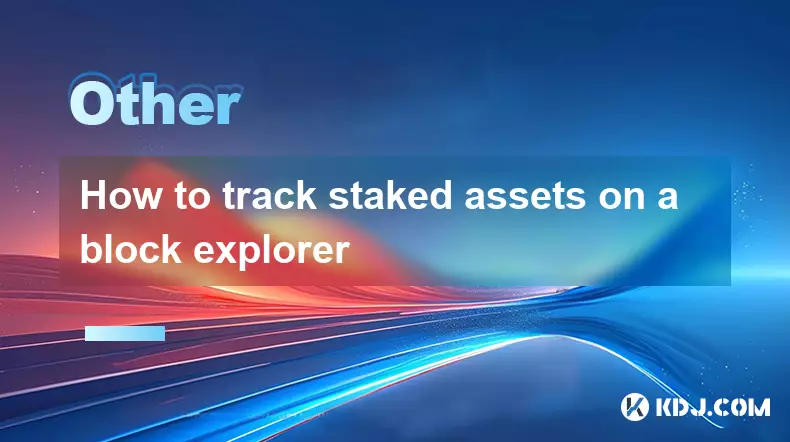
How to track staked assets on a block explorer
Sep 05,2025 at 04:18am
Understanding Staked Assets on the Blockchain1. Staked assets refer to cryptocurrency tokens locked in a smart contract or validator node to support n...
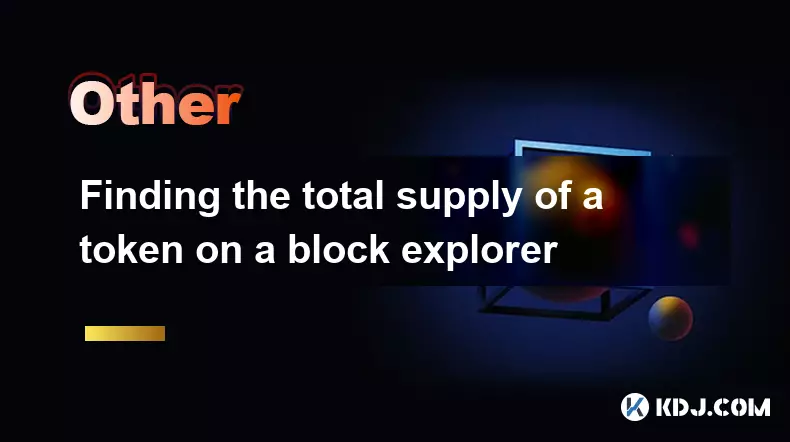
Finding the total supply of a token on a block explorer
Sep 04,2025 at 07:00pm
Finding Token Supply Information on Block Explorers1. Navigate to a blockchain explorer such as Etherscan, BscScan, or Solscan depending on the networ...
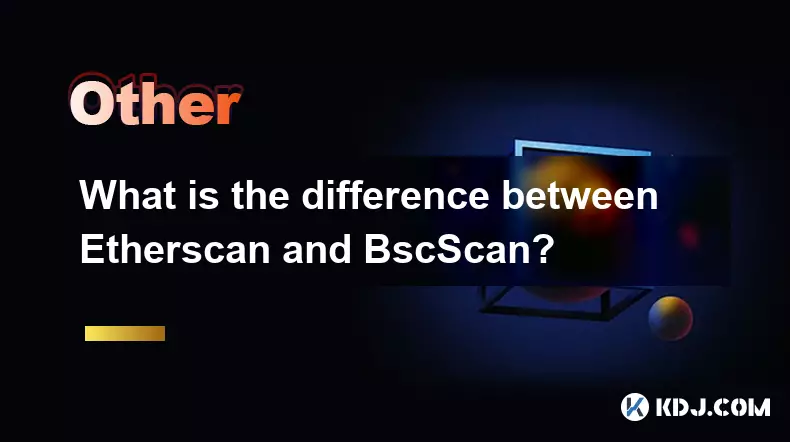
What is the difference between Etherscan and BscScan?
Sep 04,2025 at 07:55pm
Differences in Blockchain Networks1. Etherscan operates exclusively on the Ethereum blockchain, providing transparency and data tracking for all trans...
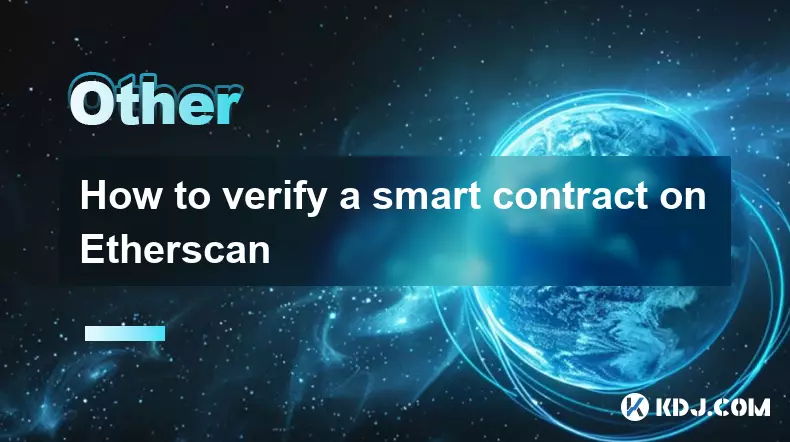
How to verify a smart contract on Etherscan
Sep 05,2025 at 05:18am
Understanding Smart Contract Verification1. Smart contract verification on Etherscan allows developers to prove the authenticity of their deployed cod...
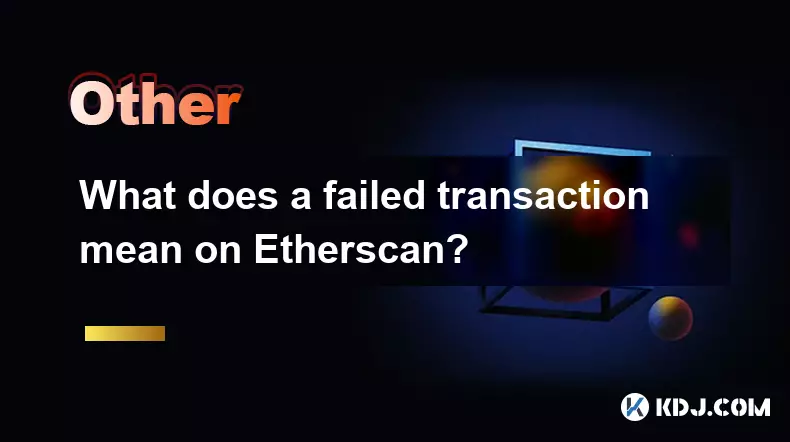
What does a failed transaction mean on Etherscan?
Sep 04,2025 at 05:55pm
Understanding Failed Transactions on EtherscanWhen users interact with the Ethereum blockchain, they often rely on Etherscan to monitor the status of ...

How to find the block height of a transaction
Sep 04,2025 at 08:37pm
Understanding Block Height in Blockchain Transactions1. Block height refers to the number of blocks that have been confirmed on the blockchain since i...

How to track staked assets on a block explorer
Sep 05,2025 at 04:18am
Understanding Staked Assets on the Blockchain1. Staked assets refer to cryptocurrency tokens locked in a smart contract or validator node to support n...

Finding the total supply of a token on a block explorer
Sep 04,2025 at 07:00pm
Finding Token Supply Information on Block Explorers1. Navigate to a blockchain explorer such as Etherscan, BscScan, or Solscan depending on the networ...

What is the difference between Etherscan and BscScan?
Sep 04,2025 at 07:55pm
Differences in Blockchain Networks1. Etherscan operates exclusively on the Ethereum blockchain, providing transparency and data tracking for all trans...

How to verify a smart contract on Etherscan
Sep 05,2025 at 05:18am
Understanding Smart Contract Verification1. Smart contract verification on Etherscan allows developers to prove the authenticity of their deployed cod...

What does a failed transaction mean on Etherscan?
Sep 04,2025 at 05:55pm
Understanding Failed Transactions on EtherscanWhen users interact with the Ethereum blockchain, they often rely on Etherscan to monitor the status of ...
See all articles























